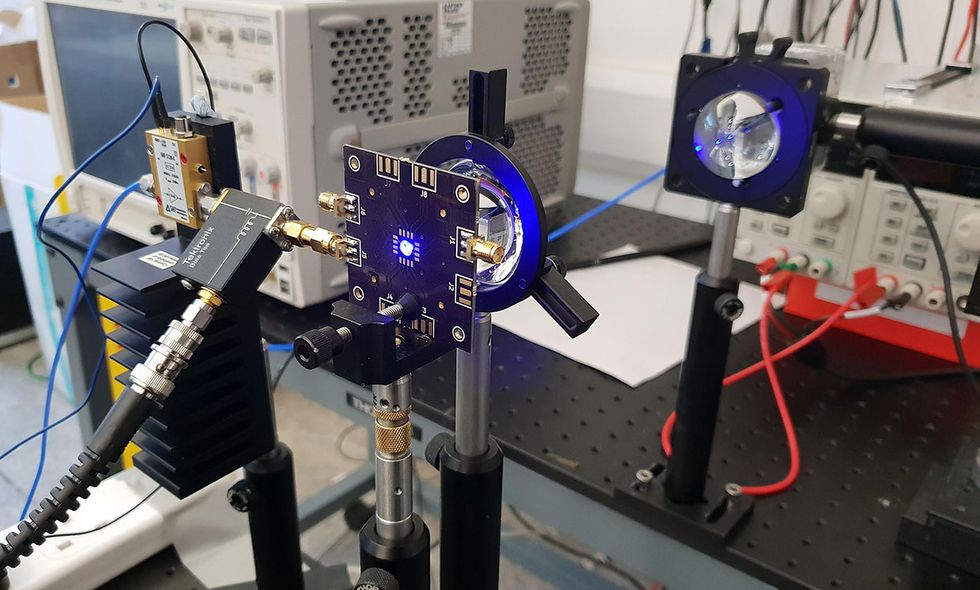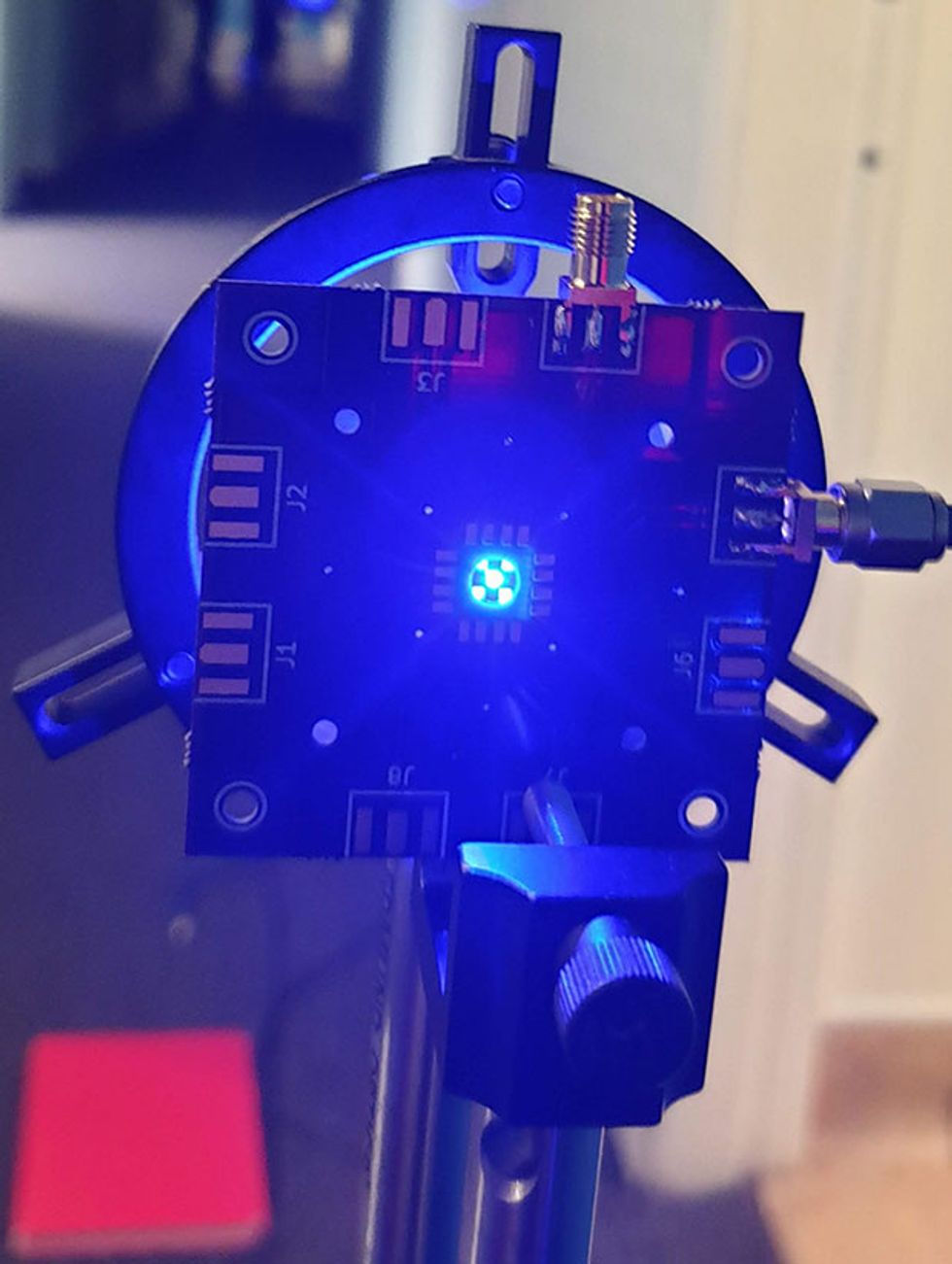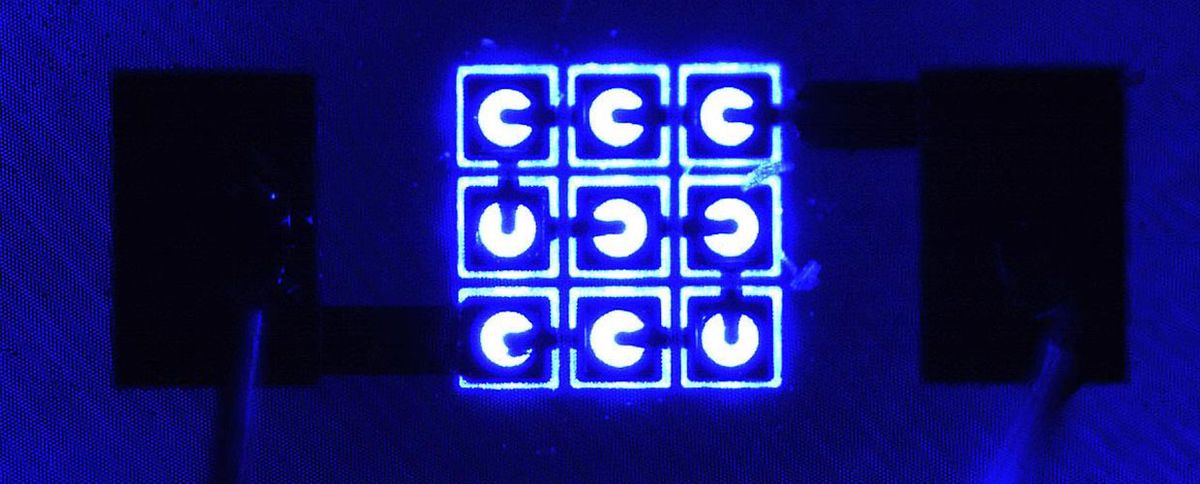Modern wireless communications most often occur at radio frequencies invisible to the human eye—but that isn’t stopping some scientists from eyeing visible light as a means to transmit data. In a recent advance, researchers in the United Kingdom succeeded in transmitting 1.61 Gbps of data across 20 meters using microLEDs. Their work was published 18 March in IEEE Photonics Technology Letters.
Mohamed Sufyan Islim, a researcher at the University of Edinburgh involved in the work, notes several advantages to using the visible light spectrum instead of radio waves to transmit data. “The radio-frequency spectrum is becoming extremely crowded and will soon fall short in providing ubiquitous connectivity for future dense networks,” he explains, also noting that visible light and infrared light waves offer bandwidth that is 2,000 times greater.

Radio frequencies are also susceptible to hackers who can intercept signals, Islim notes, whereas visible light could be protected by opaque objects.
To the best of UK team’s knowledge, high volume data transmission for visible light communication using a single microLED device has been limited to 1 Gbps at a distance of 10 meters. In their latest work, the team was able to transmit a higher rate of data at double this distance by using an array of tiny LEDs.
“In previous studies, we demonstrated that the small dimensions of the microLEDs mean that they can be modulated at much higher frequencies than standard LEDs, several hundreds of megahertz compared to a few tens of MHz,” he explains.

Being able to modulate the light source at higher frequencies allows them to transmit more data. Researchers at the University of Strathclyde set about creating a custom microLED array with 9 pixels in-series, with lights measuring just 20 micrometers in diameter.
Meanwhile, researchers at the University of Edinburgh used advanced modulation techniques to control the microLED array at extremely high speeds. Together, they built a system that achieved record data transmission rates of 11.74 Gbps at 0.3 meters, 6.58 Gbps at 10 meters, and 1.61 Gbps at 20 meters.
While this feat is impressive, this approach for data transmission is unlikely to hit the market anytime soon. Another researcher involved in the study, Enyuan Xie from the University of Strathclyde, notes that most microLEDs manufactured today are made for visual displays and not designed for transmitting data. This hasn’t stopped the group from considering possible other uses for the technology, though, including wirelessly transmitting data underwater and across open space.
You can watch the group transmit data at a rate up to 20 Mbps over 750 meters of open space here:
This article appears in the June 2020 print issue as “Messages From a
MicroLED.”
Michelle Hampson is a freelance writer based in Halifax. She frequently contributes to Spectrum's Journal Watch coverage, which highlights newsworthy studies published in IEEE journals.



